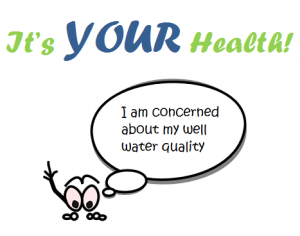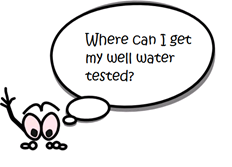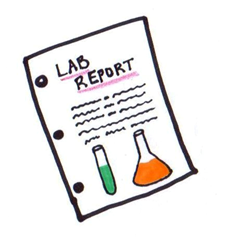Maybe it’s something about the taste. Maybe it just looks cloudy. Maybe you are wondering about that nearby gas station, onsite sewer treatment system, factory, or farm. There are many legitimate reasons to be concerned about your private well water quality. Luckily, there are answers.
 Virginia’s Private Well Regulations (12VAC5-630) require testing of newly constructed wells for coliform organisms. This test does not cover all contaminants. After installation, all subsequent testing is entirely at the discretion of the well user. Water testing that is done in association with home purchases is not required by the VDH but may be required by the lender providing the mortgage.
Virginia’s Private Well Regulations (12VAC5-630) require testing of newly constructed wells for coliform organisms. This test does not cover all contaminants. After installation, all subsequent testing is entirely at the discretion of the well user. Water testing that is done in association with home purchases is not required by the VDH but may be required by the lender providing the mortgage.
Testing your well water is the best way to ensure that your drinking water supply is safe from harmful chemicals and bacteria. In addition, water testing can determine whether nuisance impurities such as iron and manganese are present. The purpose of this fact sheet is to assist you as a private well owner to decide how frequently to test your private well water and what to test it for. It also provides you with information about how to get your water tested, understanding your water test results and protecting your well from contamination. In addition to these guidelines, we encourage you to check with your Local Health Department to find out whether there are water quality problems specific to your area. It is also a good idea to ask your neighbors whether they have ever had water quality problems.
How do pollutants get into well water?|
Well water comes from rain and snow that soaks into the ground. As water seeps through the soil and rock, it can pick up pollutants and other materials that are present in or on the ground. Some contaminants that are commonly found in well water at unsafe levels come from the rocks and soil that the water flows through. The most common in Virginia are bacteria, radon, arsenic, iron, manganese, and radiological contaminants. Other contaminants get into well water from human activities. Gasoline storage and spills, industrial/ commercial activities, improper waste disposal and road salting can introduce toxic substances to the ground. Even typical residential activities, such as using fertilizers or pesticides too close to a well, spilling fuel and improperly disposing of household chemicals can contaminate well water. Some constituents of concern – arsenic for example – can be naturally occurring as well as introduced from human activities. |
When should I test my well water?
|
Newly constructed private wells in Virginia are required to be tested for bacteria as a condition for use. While not required, and regardless of whether the well is existing or brand new, VDH suggests that prospective homebuyers test private well water for basic indicators, bacteriological and radiological chemicals of concern (see below). Water quality in wells tends to be stable, and if change occurs, it typically happens slowly. For this reason, once baseline water quality is established, several years can pass before the need for retesting of wells that are properly constructed and safely located. Bacteria and nitrate are the exceptions, and annual testing is recommended. Private well users should always consider additional testing if a wellhead is flooded, or if there is a noticeable change in quality, taste or appearance or any other unexplained change in a previously trouble-free well. |
What should I test for, and how often should I test?
|
Even if you do not suspect any well water problems, it is important to test your water to ensure that it is safe to drink. The following table lists the tests VDH recommends for all private wells even if you do not notice any problems with your water. Basic Indicators (Potability) The basic indicator list covers the most common potential contaminants associated with private wells. Some of these contaminants present health-related concerns; others affect aesthetics (taste, staining, odor). The recommended tests are alkalinity, arsenic, cadmium, chromium, bacteria, chloride, copper, fluoride, hardness, iron, lead, manganese, mercury, nitrite/nitrate, pH, sodium, sulfate, total dissolved solids, and turbidity. Bacteriological Bacteria in well water can lead to gastrointestinal illness. The recommended tests include total coliform and e-coli. Radiological The rocks in Virginia contain naturally occurring radioactive elements that dissolve in groundwater. The recommended radiological analysis will test for uranium, gross alpha and radon. ADDITIONAL TESTS TO CONSIDER Testing for the following potential contaminants should be considered when circumstances specific to your property suggest reason for concern. VDH does not recommend routine testing for petroleum products, herbicide, pesticides or other chemicals of concern. Petroleum Constituents Testing for petroleum constituents may be warranted if you know or suspect nearby petroleum storage, use, or release, including home heating oil tanks; or if there is an odor or taste of petroleum in your well water. The recommended baseline petroleum constituent analysis will test for benzene, toluene, ethylbenzene, total xylenes, naphthalene, and MTBE. Herbicides/Pesticides Testing for herbicides and pesticides may be warranted if (a) your well is located closer than 50 feet from a building foundation that was treated for termites prior to 1990, (b) significant amounts of herbicides or pesticides have been applied near your well, or (c) if your well water is found to contain elevated nitrite or nitrate concentrations and an agricultural source is suspected. The recommended baseline herbicide/pesticide analysis will test for dieldrin and chlordane. |
| Test | How Often | Purpose |
| Basic Indicators (Potability) | An initial test is suggested. If no problems, once every 5 years thereafter |
The basic indicators provide you with a general indication of water quality, and are useful to determine if additional tests are warranted. |
| Lead | If your water is corrosive (pH <6), consider more frequent testing |
Lead can leach from plumbing (pipes and faucets). Lead pipes may be in homes built before 1930. Lead-based solder may be in homes built before 1988. Brass is used in new plumbing and fixtures. All brass contains small amounts of lead. Corrosive water leaches more lead. Young children are more susceptible to harmful effects from lead exposure. |
| Nitrate | Annually | High levels of nitrates can cause health problems, including methemoglobinemia, commonly known as “blue baby syndrome.” |
| Bacteriological | Annually |
The bacteriological tests provide you with protection against acute gastrointestinal illnesses. |
| Radiological | At least one time |
The radiological tests identify effects of naturally occurring radioactive elements in rock and sediments. |
| Fluoride | Every 5 years when children under 5 are regular users |
Fluoride can occur naturally in wells throughout Virginia. A child’s permanent teeth can become discolored from excess fluoride. Too little fluoride can increase risk of tooth decay. Your child’s dentist may ask you about the fluoride level in your well water. |
| Petroleum, Herbicide/Pesticide | If suggested by site conditions | Evaluation of site specific contaminant threat. |
There may be other potential contaminants of concern that result from a release of chemical or petroleum products. If a contaminant release is identified in the vicinity of your private well, contact your Local Health Department for information.
Finding a Laboratory

The Virginia Division of Consolidated Laboratory Services is responsible for the accreditation of commercial laboratories under the Virginia Environmental Laboratory Accreditation Program (VELAP). You can find a current listing of accredited laboratories HERE. Most commercial laboratories can provide you with everything you need for your well sampling event, including sample containers, preservatives, and detailed instructions on the procedure to collect the sample. Another source is the Virginia Household Water Quality Program administered through the Virginia Cooperative Extension, which offers low cost annual water well testing/drinking water clinics at various locations throughout Virginia. In most cases, you can collect a sample of your tap water yourself. In so doing, carefully follow the laboratory’s instructions to obtain a good sample. The method of collecting a sample varies depending on the tests being done. For example, some contaminants such as lead and copper may require that water remains stagnant in the pipes for a minimum of 6 hours and is collected upon the first draw of water. Other contaminants require that the water be flushed or run for a minimum period of time before collecting the sample. Some contaminants require special sample bottles and procedures. Make sure that nothing but the water being sampled comes in contact with the opening of the bottle or the inside of the cap. Timeliness is important, too. Some contaminants deteriorate or change form with time. Most water samples need to be kept on ice when being taken to the lab. To assure accurate results, make certain the lab receives your water sample within the specified time directed on the instructions. |
What do my test results mean?
When you receive the laboratory’s Certificate of Analysis, you might wonder what the results mean. It’s one thing to find your results to be non-detectable, it’s something else if a particular result is so many parts per billion or parts per mi llion. Is it good or bad? One way to understand your results is to ask the lab that did the testing. An alternative approach is to ask your Local Health Department. llion. Is it good or bad? One way to understand your results is to ask the lab that did the testing. An alternative approach is to ask your Local Health Department.
A third option is to use an online tool that allows you to type your water test results into the tool to automatically get simple explanations about the potential health risks, treatment options and more. LIKE THIS ONE: With such web-based services, you can enter your test result to quickly obtain general information, recommendation regarding response, health effects, treatment options, and resource listings for further information. However, before taking action to protect your well water, be sure to consult with a licensed water well system provider. |
Keep the records!
|
Keep a record of all your water tests for reference. A change in the concentration of a contaminant may indicated that a water quality problem is developing. By comparing test results over time, you may find that a change in treatment is necessary or that a treatment device is not functioning properly.
|
Treatment systems
|
If you have water treatment equipment in your home, or need to have one to address contaminants identified by well testing, be aware that water treatment systems are designed for certain, specific contaminants and will not necessarily remove all contaminants. You can monitor whether the treatment system is doing its job by testing for the contaminant(s) that the system is treating. Consider periodically testing your water before and after treatment to be sure the system is continuing to work properly.
|
Protecting your well
|
You can protect your private well by paying careful attention to what you do in and around your home as well as your neighbor’s activities near your well. Consistent good practices to prevent contamination can help ensure that your well supplies you and your family with good quality drinking water. Here are some important ways you can protect your drinking water well.
|
Additional Information

Arsenic (hyperlink to: http://wellowner.org/water-quality/arsenic/) Boron (hyperlink to: https://www.epa.gov/dwstandardsregulations/chromium-drinking-water) Chromium (hyperlink to: https://www.epa.gov/dwstandardsregulations/chromium-drinking-water) Coliform Bacteria (hyperlink to: http://wellowner.org/water-quality/coliform-bacteria/) Hydrogen sulfide (hyperlink to: http://wellowner.org/water-quality/hydrogen-sulfide/) Lead (hyperlink to: http://wellowner.org/lead/) MTBE (hyperlink to: http://wellowner.org/water-quality/mtbe/) Nitrates (hyperlink to: http://wellowner.org/water-quality/nitrates/) Radionuclides (hyperlink to: http://wellowner.org/water-quality/radionuclides/) Radon (hyperlink to: http://wellowner.org/water-quality/radon/) Trihalomethanes (hyperlink to: http://wellowner.org/water-quality/trihalomethanes/) Uranium (hyperlink to: http://wellowner.org/water-quality/uranium-what-you-need-to-know/)
|
||||||||||||||||||||||||||||||||||
| U.S. EPA Guidance
Here is the U.S. EPA’s list of reasons to test your private well water. It lists water quality issues you might encounter and what tests you should do if you have a particular issue with your water. Whenever you notice a change in the taste, color, odor, or clarity of your water, contact your Local Health Department for assistance.
|

